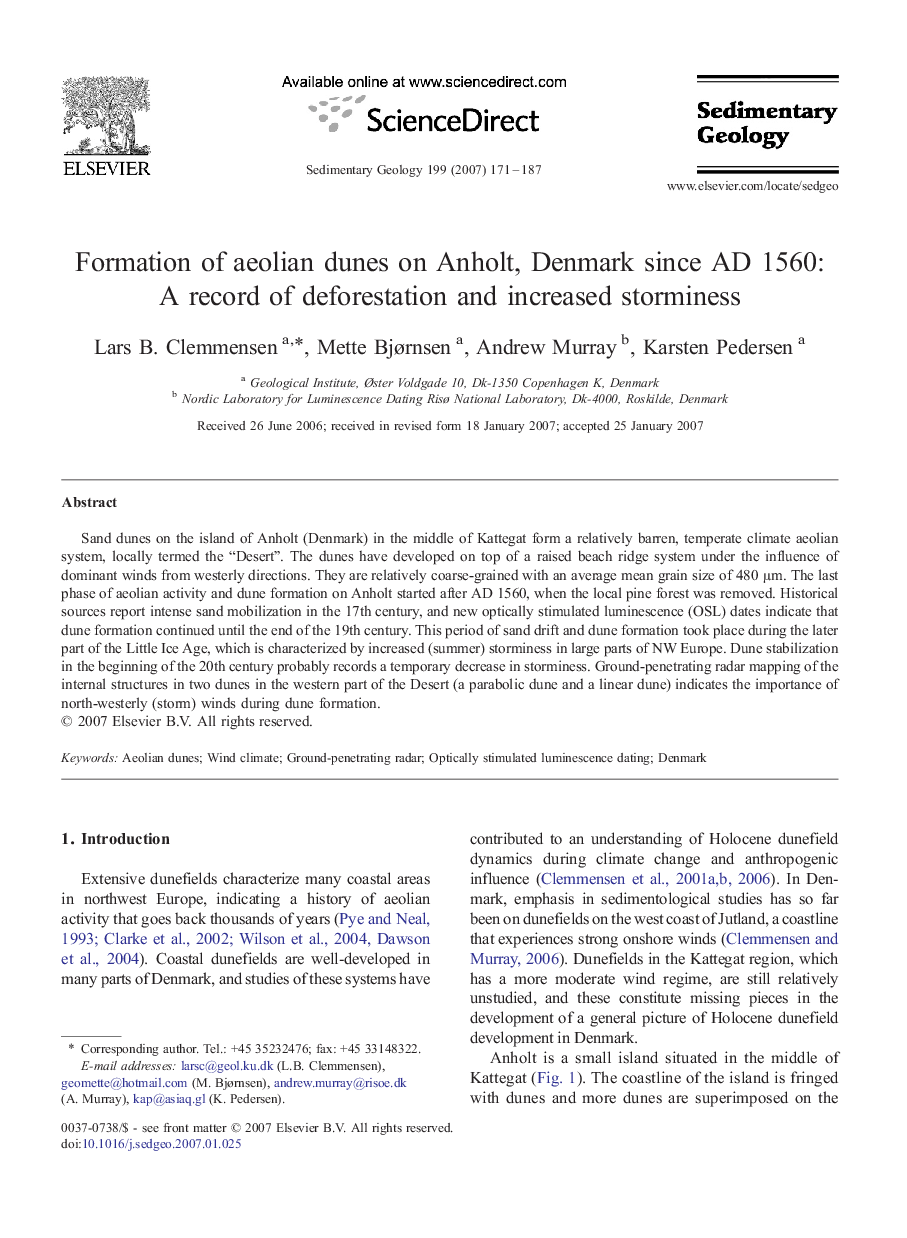| Article ID | Journal | Published Year | Pages | File Type |
|---|---|---|---|---|
| 4690806 | Sedimentary Geology | 2007 | 17 Pages |
Sand dunes on the island of Anholt (Denmark) in the middle of Kattegat form a relatively barren, temperate climate aeolian system, locally termed the “Desert”. The dunes have developed on top of a raised beach ridge system under the influence of dominant winds from westerly directions. They are relatively coarse-grained with an average mean grain size of 480 μm. The last phase of aeolian activity and dune formation on Anholt started after AD 1560, when the local pine forest was removed. Historical sources report intense sand mobilization in the 17th century, and new optically stimulated luminescence (OSL) dates indicate that dune formation continued until the end of the 19th century. This period of sand drift and dune formation took place during the later part of the Little Ice Age, which is characterized by increased (summer) storminess in large parts of NW Europe. Dune stabilization in the beginning of the 20th century probably records a temporary decrease in storminess. Ground-penetrating radar mapping of the internal structures in two dunes in the western part of the Desert (a parabolic dune and a linear dune) indicates the importance of north-westerly (storm) winds during dune formation.
